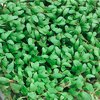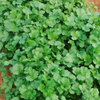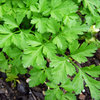Product Categories Vegetable Seeds D-P Herbs Sorrel Volare Vegetable/Fruit - 280 (1g) Seeds
Sorrel Volare Vegetable/Fruit - 280 (1g) Seeds
Product no.: SEEDV255
In stock
Delivery period: 1 working days
Accessories
| Product | Note | Status | Price | |
|---|---|---|---|---|
|
|
£6.10 * | ||
|
|
from £6.08 * | ||
|
|
£5.54 * | ||
|
* Prices plus VAT, plus delivery
Display accessory details
|
||||
We also recommend
* Prices plus VAT, plus delivery
Customers who bought this product also bought
|
Coriander Cruiser (P.V.P) 106 (1.2g) Herb Seeds
from
£0.76
*
|
|
Oregano, Greek Herb Seeds
from
£0.85
*
|
|
|
|
* Prices plus VAT, plus delivery
Browse this category: Herbs













 10 x Full Heavyweight Seed Tray 35cm x 22cm x 5cm
10 x Full Heavyweight Seed Tray 35cm x 22cm x 5cm Propagator Lids for Standard Full Size Seed Tray
Propagator Lids for Standard Full Size Seed Tray 10 x Vacapot 50 Cell Plug Plant Insert Seed Trays
10 x Vacapot 50 Cell Plug Plant Insert Seed Trays






